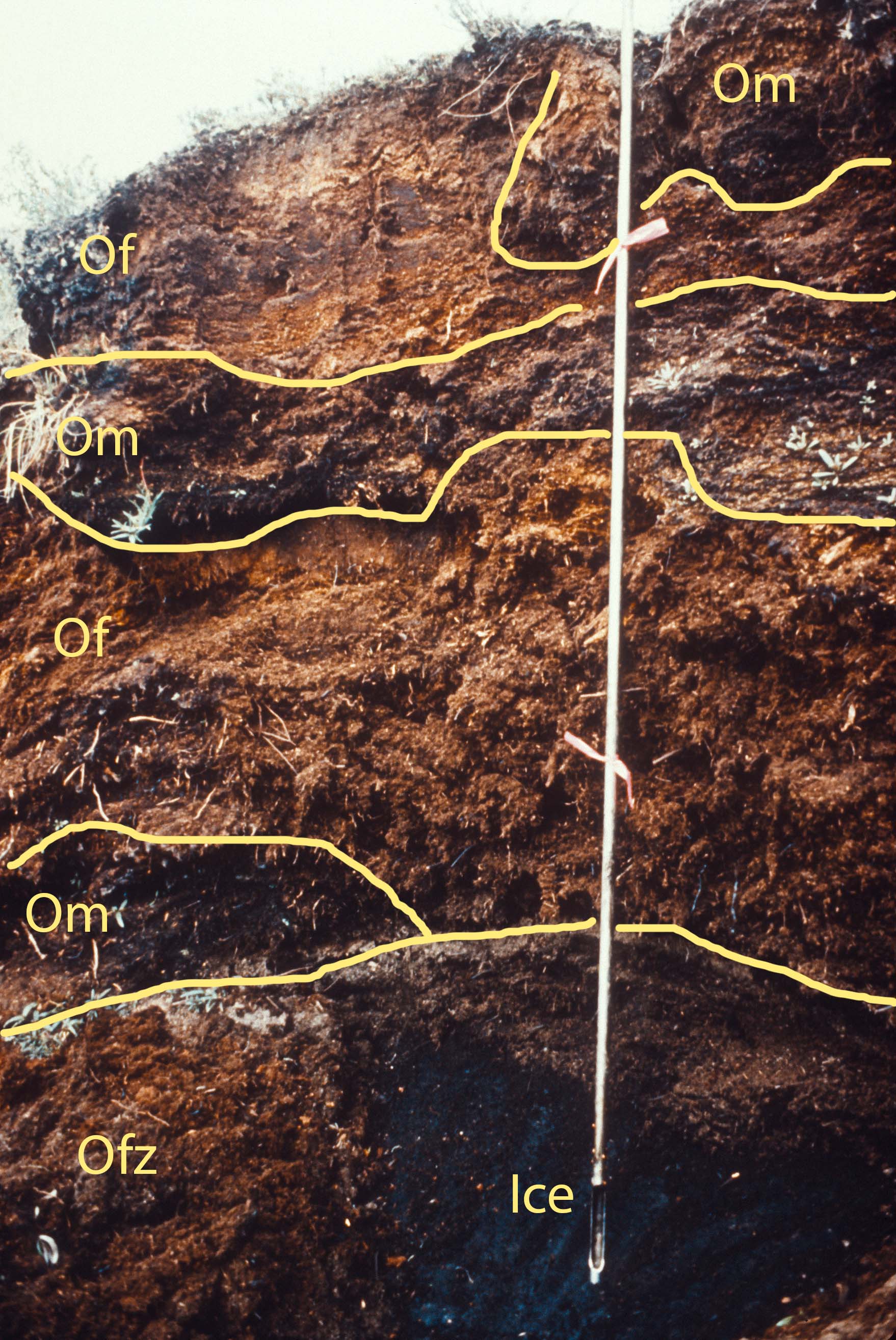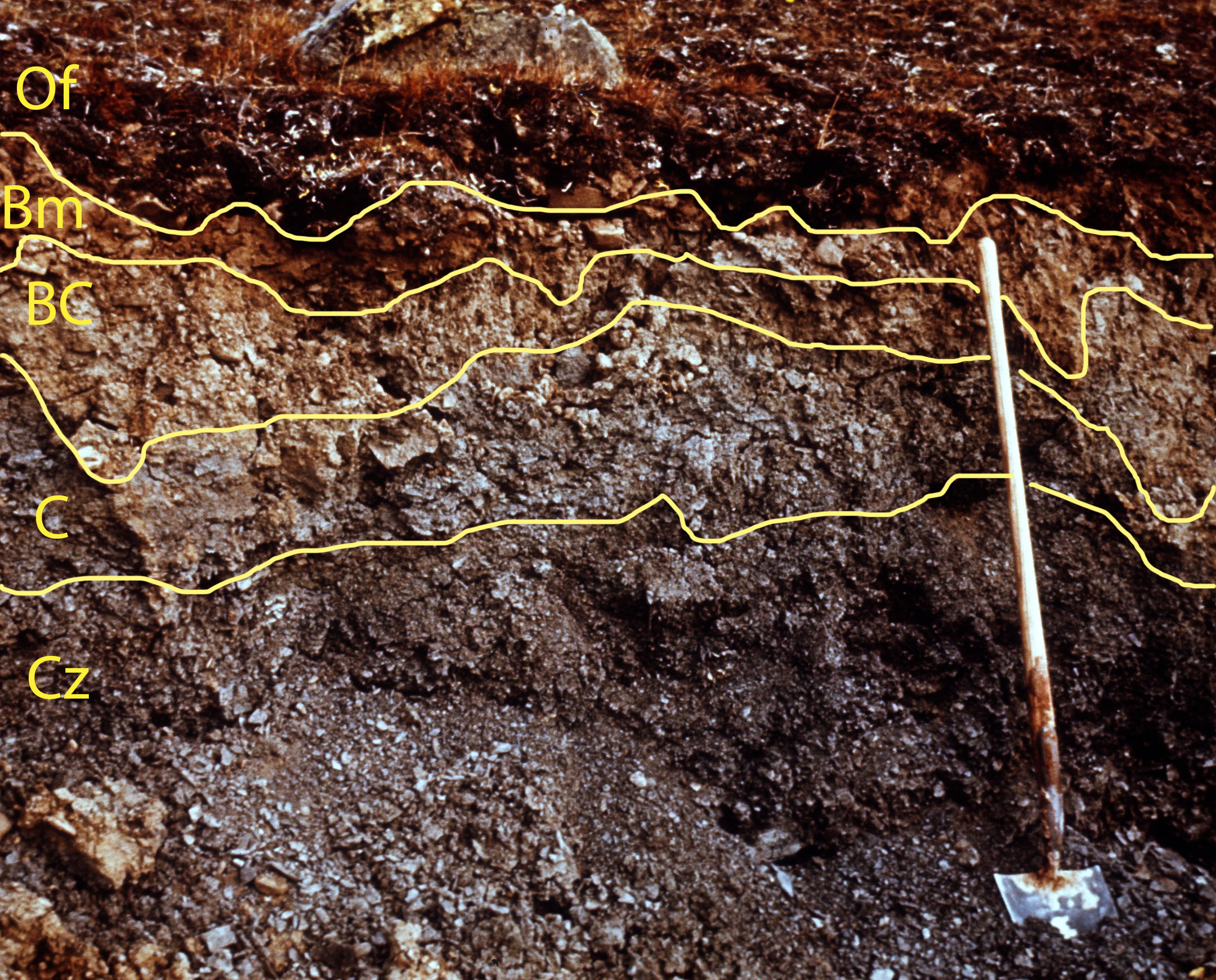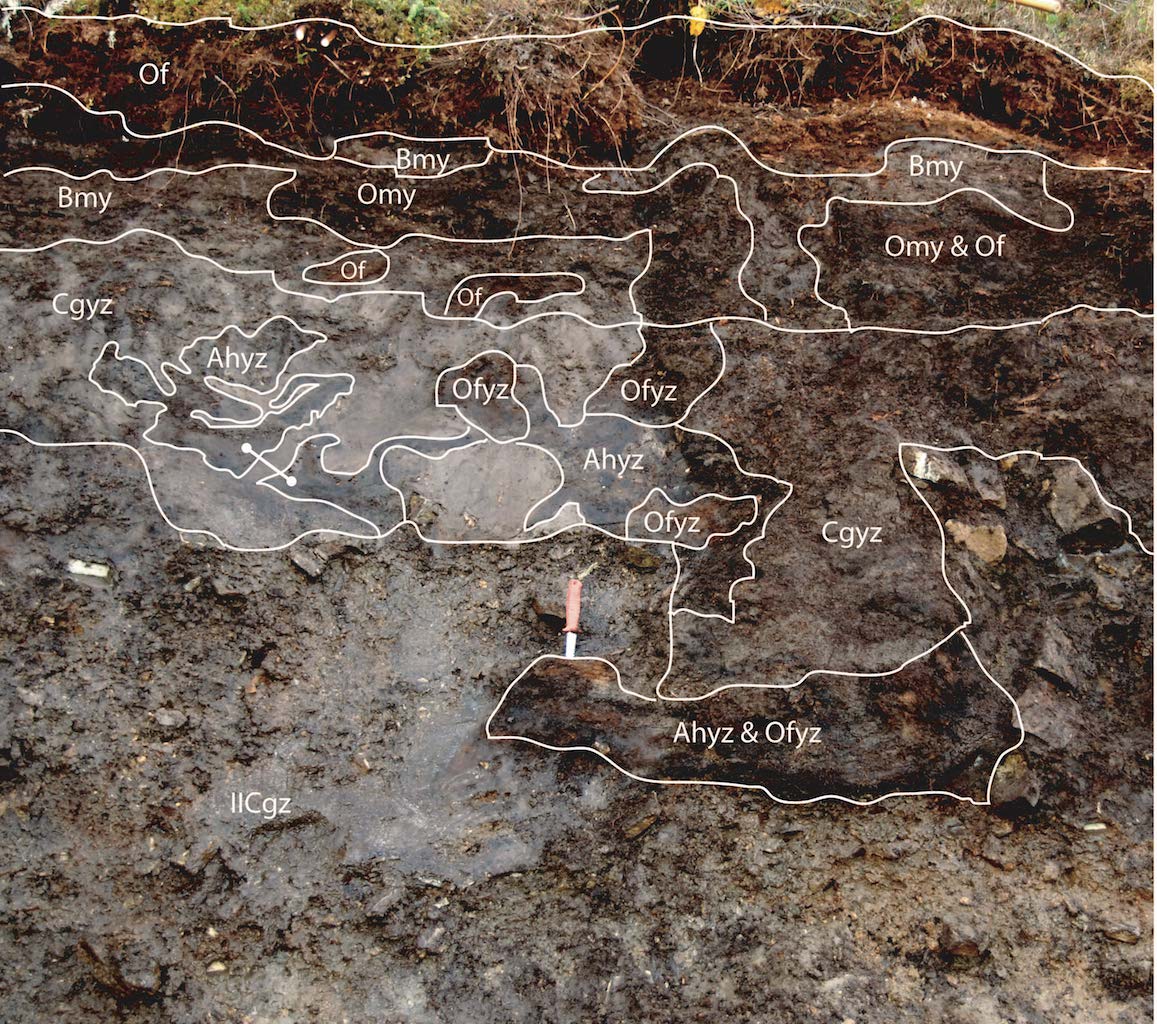Organic Cryosol

Organic matter often builds up in Cryosolic soils because the rate of decomposition is very slow in these cold environments. The permafrost layer here begins in the Ofz horizon and a wedge of dark ice is apparent in the bottom right-hand side of the image. The remainder of the soil has a mixture of mesic (Om) and fibric (Of) organic matter. These soils have the potential to release large amounts of CO2 as climate warming increases the decomposition rates.
Contributor: Soils of Canada slide set
Static Cryosol

Static Cryosols normally form in relatively coarse textured parent materials. Because of the low amounts of water retained in these soils frost wedges do not form and hence little mixing (turbation) by frost action occurs. This soils has a minimally weathered Bm horizon underlying a thin fibric organic layer (Of). The permafrost horizon is denoted by the z suffix.
Contributor: Soils of Canada slide set
Turbic Cryosol

This soil has formed in finer-textured sediments and has undergone considerable turbation due to frost action and due to mass movement of soil downslope due to thawing events. Radiocarbon dates on the buried organic matter ranged from 350 to 3680 14C years before present. The continuous white line approximately 1/3 from the top indicates the permafrost layer, with all horizons below this have a z suffix.
Contributor: Paul Sanborn and Scott Smith
Source: Smith, C.A.S., P. Sanborn, J.D. Bond, and G. Frank. 2009. Can. J. Soil Sci. 89:611-622.
Location: West-central Yukon
